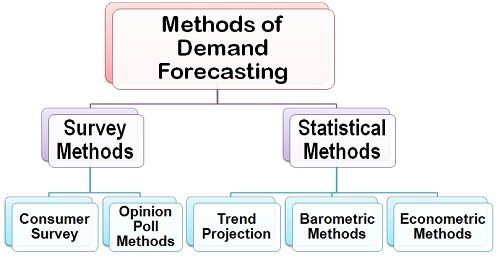While it may be hard to predict the future with certainty, you can make educated guesses with demand forecasting. There are different demand forecasting techniques you can employ to help you make better decisions for your business.
Table of Contents
Types of Demand Forecasting
There are several ways you are able to do demand forecasting. The forecast can differ based on the model you choose to use. It’s best practice to do multiple demand forecasts in order to get a well-rounded picture for future sales. If you use more than one model, it will be able to highlight differences and those differences can point you where you need to do more research.
Passive Demand:
This is the simplest type. With this model, you use sales data from the past in order to predict the future. You will want to use data from the same season so that you can project sales for that season and are comparing apples to apples. This will be especially important if you have a business with seasonal fluctuations. This model will work well if you have sales data to build on and for a business that is looking for stability instead of growth.
Active Demand:
This is for businesses that are in the growth phase. It takes into account expansion plans, marketing campaigns, and market research. It also factors in active projections. Considerations include growth projections for the market and the economic outlook.
Short Term Projections:
A short-term demand forecast looks at only the next three to 12 months. This can be helpful if you are just looking at your supply chain and will allow you to adjust projections based on your real-time sales data.
Long Term Projections:
Long-term demand forecasts look at the next one to four years. The model focuses on shaping business growth. The long-term demand forecast can be used as a roadmap for supply chain operations, capital investments, and marketing. This helps prepare for future demand and if you want your business to grow then this is important.
External Macro Forecasting:
This forecast incorporates trends that are in the broader economy. It looks at how trends affect your goals. It also gives you direction on how to meet those goals. Even if your company is more interested in stability instead of expansion, it’s still necessary to know how external forces in the market affect your sales.
Internal Business Forecasting:
Using this type of forecast, you can look at limitations that can slow your growth. This is helpful for making realistic expectations.
Different Methods of Demand Forecasting
There are different methods to create a forecast.
Trend Projection:
This uses your past sales data to protect future sales and is one of the easiest ways to do demand forecasting.
Market Research:
Using the market research method, you use data from customer surveys in order to get information. This method gives you valuable insights you may not get from your sales data.
Sales Force Composite:
This method uses your sales team and feedback from the sales group to forecast your customer demand. Since salespeople have close contact with your customers they are a good source of data for product trends, what competitors are doing, and what your customers want.
Delphi Method:
This method uses expert opinions on a market forecast. You need to engage with outside experts. You begin by sending questionnaires to a group of experts, and then you make a summary of the responses from the first round and share it with the panel. The process is repeated with different rounds and is done when your panel comes to a consensus.
Econometric:
This method requires you to do some number crunching and combines information on outside forces with your sales data, using a mathematical formula to predict demand.












